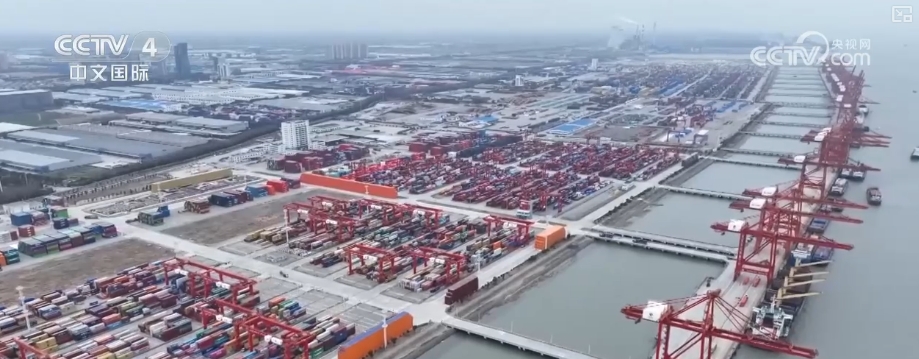The Silk Road: Ancient Transportation And Cultural Links That Traveled Through Thousands Of Years
The Silk Road: Ancient Transportation And Cultural Links That Traveled Through Thousands Of Years
Introduction to the Silk Road, this name shines brightly in the long river of history, representing a glorious chapter in the exchange of civilizations between East and West. It is not only an ancient trade route, but also a bridge for cultural, ideological, technological and religious exchanges. Traveling through thousands of years of storms
introduction
The Silk Road, this name shines brightly in the long river of history, represents a glorious chapter in the exchange of civilizations between East and West. It is not only an ancient trade route, but also a bridge for cultural, ideological, technological and religious exchanges. Through thousands of years of storms, the Silk Road has witnessed the prosperity and integration of human civilization and has also profoundly influenced the process of world history. This article will give you a comprehensive interpretation of this great ancient transportation network from multiple angles such as the origin, development, influence and modern significance of the Silk Road.
1. The origin and formation of the Silk Road
1. Historical background
The origin of the Silk Road can be traced back to the Han Dynasty around the 2nd century BC. During the reign of Emperor Wu of Han, in order to consolidate the rule of the Western Regions and explore foreign trade, Zhang Qian was sent to the Western Regions to open a trade channel connecting China with Central Asia, West Asia and Europe. Zhang Qian's journey west not only opened up the path of military and diplomacy, but also laid the foundation for subsequent commercial exchanges.

2. The formation of routes
The Silk Road is not a single route, but consists of multiple intertwined trade channels, mainly including:
Land Silk Road: Starting from Chang'an, China, passing through Central Asia, Iran, and the Arabian Peninsula, and finally reaching Europe. The main paths include the "south road" and "north road" from China to Central Asia, and then to Persia and the Mediterranean region.

Maritime Silk Road: Departing from China's coastal ports, passing through the South China Sea and the Indian Ocean, bypassing the Arabian Peninsula, directly to the east coast of Africa, the Arabian Peninsula, South Asia, and even as far as East Africa and Southeast Asia.

3. Causes of formation
The formation of the Silk Road is driven by economic demand and is also affected by many factors such as politics, military, and culture. China's silk, porcelain, tea and other commodities are warmly welcomed by the Central Asia, West Asia and Europe markets; and Central Asia's spices, gemstones and metal products also enrich the commodity system of countries along the route.
2. The main contents and routes of the Silk Road
1. Land Silk Road
The Silk Road on the Land was one of the most important trade channels in ancient times. It began in Chang'an (now Xi'an) in China, passed through Gansu, Shaanxi, Qinghai, Mongolia, crossed Samarkand, Bukhara, Baghdad, and Antioch in Central Asia, and finally arrived on the Mediterranean coast.
This route passes through many important cities and trade centers along the way, forming a prosperous trade network. Countries and regions along the route, such as Korla and Samarkand in Central Asia, Persepolis in Iran, and Baghdad in Arabia, are all important trade nodes.

2. Maritime Silk Road
The Maritime Silk Road starts at coastal ports in China such as Fuzhou, Guangzhou, Quanzhou, etc., passes through the South China Sea and the Indian Ocean, passes through Sri Lanka, the Arabian Peninsula, and the east coast of Africa, and finally arrives at the Alexandria in Egypt or the Suez Canal in the Red Sea.
This route was particularly prosperous during the Tang and Song dynasties, promoting exchanges between China and South Asia, East Africa and even as far as the Arabian Peninsula. Especially during the Song and Yuan dynasties, the Maritime Silk Road became an important link connecting China with the world.

3. Cultural exchange and influence of the Silk Road
1. Diversification of trade goods
In addition to silk, porcelain, tea, spices and gems, countries along the route also exchanged various commodities and technologies. For example, the carpets in Central Asia, Persian flower porcelain, Indian spices, Arabic medicinal materials, etc. enrich the material culture of various countries.

2. The spread of religion
The Silk Road is not only a platform for exchange of goods, but also an important channel for religious dissemination. Buddhism was introduced from India to Central Asia and East Asia, and gradually took root in China, North Korea, Japan and other places. Christianity, Islam, Zoroastrianism, etc. are also spread along the route, promoting the exchange and integration of diverse religions.
3. Exchange between culture and technology
The art, architecture, writing, science and technology in the countries along the route influence each other. For example, the art of murals in Central Asia was influenced by Persia and India, and Arab mathematics and astronomy were introduced to China, promoting the common development of science and technology between the East and the West.

4. Language and Literature
The Silk Road has promoted multilingual communication and formed a multicultural integration. For example, Persian, Arabic, Turkic, Chinese, etc. are widely spread in the areas along the route, promoting the development of literature and academics.
4. The decline and change of the Silk Road
1. Political turmoil and war
With the decline of the Tang and Song dynasties, the rise of the Mongol Empire and the subsequent wars, the Silk Road gradually declined. The Mongolian invasion destroyed many important trading cities, resulting in the interruption of trade routes.
2. The rise of maritime shipping
After the 15th century, European countries such as Portugal and Spain began to explore maritime routes and opened up maritime routes to India and Southeast Asia. The Maritime Silk Road gradually replaced the land route and became the new mainstream of international trade.
3. Development of modern transportation
Since the 20th century, the emergence of modern modes of transportation such as railways, highways, and aviation has made global trade more convenient. The "Belt and Road" initiative proposed by China is aimed at reviving the spirit of the Silk Road, connecting Asia, Africa and Europe, and promoting regional cooperation and development.
5. The modern significance of the Silk Road
1. Cultural Heritage and Tourism
The Silk Road has rich historical relics, such as the Mogao Grottoes in Dunhuang, the Ancient City of Samarkand, the Baghdad monuments, and the Egyptian pyramids, which have become an important part of the world cultural heritage. The development of tourism has also driven economic prosperity in countries along the route.

2. Economic cooperation and regional integration
The "Silk Road Economic Belt" and the "21st Century Maritime Silk Road" initiatives promote countries along the route to strengthen infrastructure construction, trade cooperation, and cultural exchanges, and achieve common development.

3. Promote multi-civilized exchanges
The Silk Road symbolizes the integration and coexistence of different civilizations, reminding us of the importance of respecting diversity and promoting inclusiveness and win-win results in the context of globalization.

6. Conclusion
As the link between the East and the West in ancient times, the Silk Road not only promoted economic prosperity, but also promoted the exchange and integration of culture, religion and science and technology. Its history tells us that cooperation and communication are the driving force for the continuous advancement of human civilization. Today, in the face of the challenges and opportunities of globalization, the spirit of the Silk Road still has important practical significance. We should inherit and carry forward this great historical heritage and jointly build a community with a shared future for mankind.
Author Profile:
As a fan of historical research and sharing blogger, I am committed to digging and spreading the treasures of human civilization. I hope that through in-depth and easy-to-understand explanations, more people can understand the excitement and wisdom of history.
References:
"Silk Road: History, Culture and the Future"
"History of the Silk Road in China"
UNESCO Information on the Silk Road
Related academic papers and archaeological discoveries #Silk Road##Silk Road Economic Belt#





